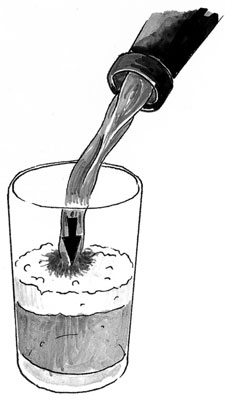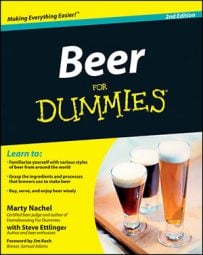Before you pour a beer, make sure you have a glass that can hold the contents of a whole bottle or can plus a head. That makes everything easier. How to best pour a beer depends on the type of beer. For most craft beers, the best way to pour is right down the middle of the glass — again, a glass big enough to hold the whole bottle of beer — and tilt it or slow the pouring only after a big head has formed.

Why pour so vigorously? To release the carbon dioxide. You want to do this for the following reasons:
Unless it’s released by pouring, the gas is trapped in the bottle or can and goes straight into your belly, where it struggles to release itself in an unwelcome burst. Ugh and urp.
Unpoured beer has an unpleasant and unappealing, gassy bite on the palate.
Releasing the gas by pouring into a glass forms a head and lets the beer’s fragrance waft from the beer. (Sniff right after pouring because the aromas dissipate quickly.)
Some types of beer require special techniques. These techniques aren’t rocket science, but they’re worthy of attention.
Wheat Beers and corked-bottle beers: Be a little less aggressive when pouring these types of beers because they tend to throw a larger-than-normal head. A proper head should be at least 1 inch thick, or two fingers deep.
Bottle-conditioned beers: You may want to pour these beers so you leave the last 1/2 inch or so of dregs in the bottle. Absolutely nothing is wrong with drinking the settled yeast sediment, except that it may cause excess flatulence — the live yeast continue the fermentation process within your digestive tract! In addition, not everyone is fond of this concentrated yeast taste, though some beer aficionados swear by it. But then, some folks like anchovies, too.
American Pale Lagers: Beers such as Budweiser and Miller are best poured slowly down the side of a tilted glass, or else they produce a glass full of head. Because these beers have little protein, a big head dissipates quickly. Creating a big head slows the pouring process needlessly (and risks having a mess on the table).

